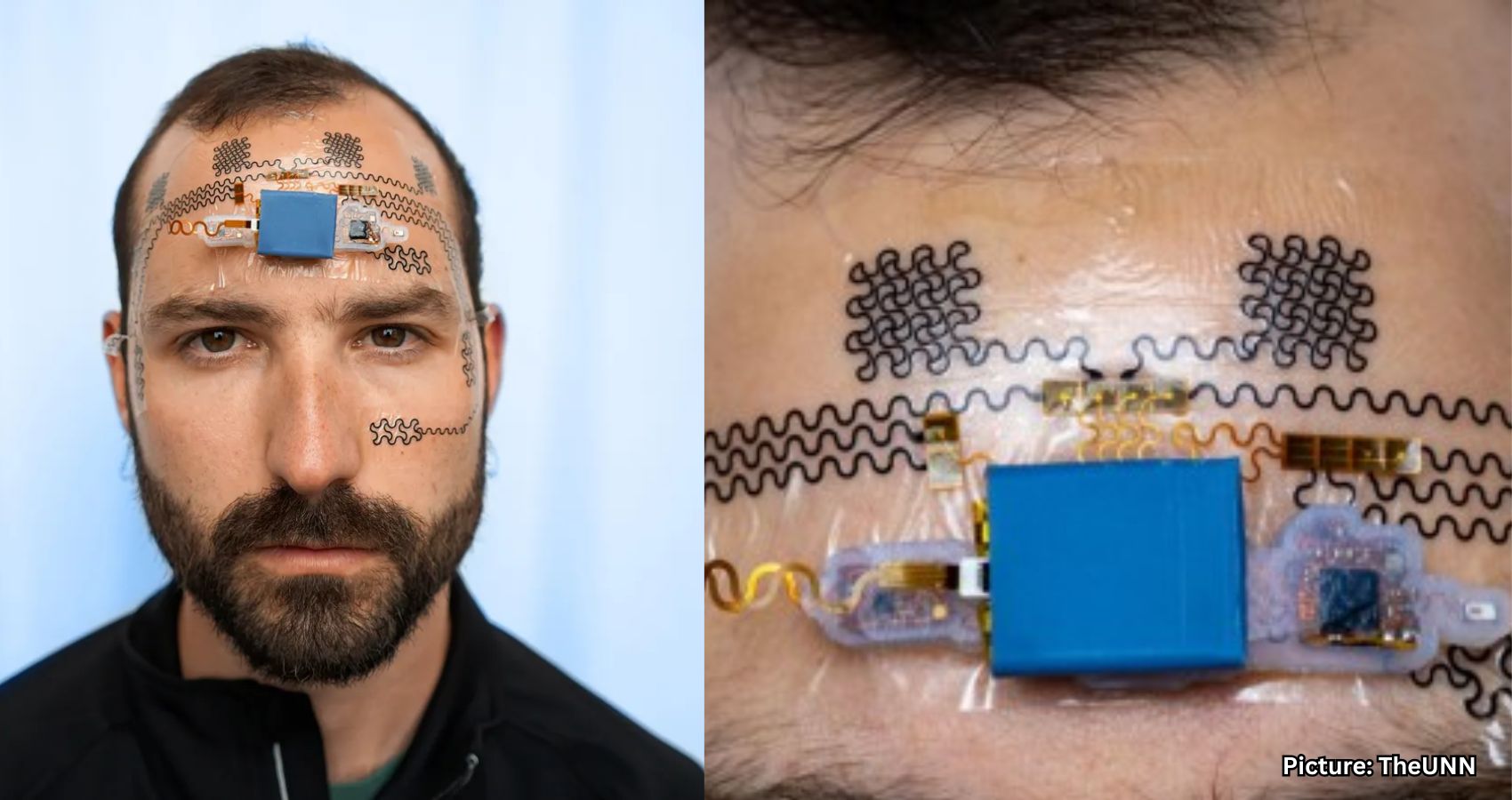Researchers have developed a novel electronic tattoo, or “e-tattoo,” designed to monitor mental workload in high-stress professions by measuring brain activity and eye movements.
In an innovative breakthrough, scientists have introduced a wire forehead e-tattoo that utilizes electroencephalogram (EEG) and electrooculogram (EOG) technologies to assess brain activity and cognitive performance. This electronic tattoo device aims to assist individuals in high-pressure work environments by providing a means to track their brainwaves and mental workload.
The research, published in the journal Device, highlights the e-tattoo as a more cost-effective and user-friendly alternative to traditional monitoring devices. Dr. Nanshu Lu, the senior author of the study from the University of Texas at Austin, emphasized the importance of mental workload in human-in-the-loop systems, noting its significant impact on cognitive performance and decision-making.
Dr. Lu explained that the motivation behind this device stems from the needs of professionals in high-demand roles, including pilots, air traffic controllers, doctors, and emergency dispatchers. The e-tattoo could also benefit emergency room doctors and operators of robots or drones, enhancing both training and performance in these critical fields.
One of the primary objectives of the study was to develop a method for measuring cognitive fatigue in professions that require intense mental focus. The e-tattoo is designed to be temporarily affixed to the forehead and is notably smaller than many existing devices.
According to the study, the e-tattoo operates by measuring brain waves and eye movements through its EEG and EOG capabilities. While conventional EEG and EOG machines tend to be bulky and costly, the e-tattoo presents a compact and affordable solution for monitoring mental workload.
Dr. Lu described the device as “a wireless forehead EEG and EOG sensor designed to be as thin and conformable to the skin as a temporary tattoo sticker.” She further noted that understanding human mental workload is crucial in the realms of human-machine interaction and ergonomics, given its direct influence on cognitive performance.
The research involved six participants who were tasked with responding to a series of letters displayed on a screen. Each letter appeared one at a time in various locations, and participants were instructed to click a mouse if either the letter or its position matched a previously shown letter. The tasks varied in difficulty, allowing the researchers to observe how brainwave activity shifted in response to increasing mental workload.
The e-tattoo consists of a battery pack, reusable chips, and a disposable sensor, making it a practical option for ongoing use. Dr. Lu indicated that the current prototype is priced at approximately $200.
While the e-tattoo shows promise, Dr. Lu noted that further development is necessary before it can be commercialized. This includes enhancing the device’s capabilities for real-time mental workload decoding and validating its effectiveness in more diverse and realistic settings.
As research continues, the e-tattoo may pave the way for improved monitoring of cognitive performance in high-stress jobs, potentially leading to better decision-making and enhanced overall performance in critical situations.
Source: Original article

